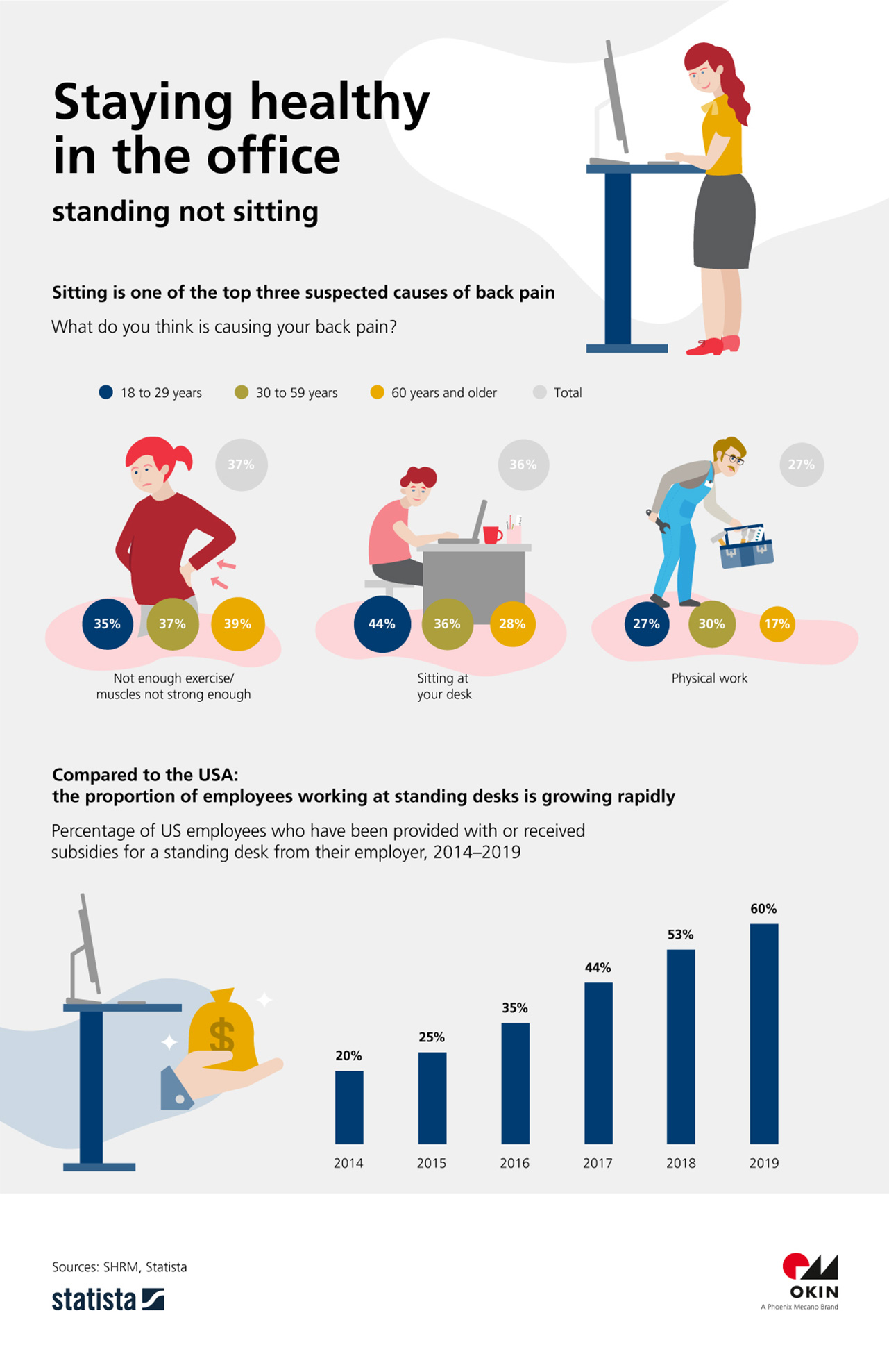Ergonomics in the office: How height-adjustable desks promote health
The average office worker spends a total of 80,000 hours sitting down at work – the equivalent of more than nine years. However, many employees find it difficult to maintain a healthy sitting posture over long periods of time. This can damage the spine. Many Germans (36 percent) think that lack of exercise and sitting at a desk for long periods of time during work are the main causes of back pain. This is particularly true for the younger age group, which often works full-time. Forty-four percent of 18 to 29-year-olds attribute back pain to sitting for long periods. Among 30 to 59-year-olds, the proportion is 36 percent.
営業担当者
Thorsten Holtmeier
t.holtmeier@okin.de
Nowadays, back pain is one of the most common office ailments. Two out of three Germans complain of back pain, while one in three regularly has back pain. The consequences are devastating, not only for employees but also for employers. The loss of added value due to sickness-related absences related to back problems adds up to 16 billion euros annually in Germany. Therefore, ergonomics at the workplace is a fundamental economic factor for companies. There is strong demand for height-adjustable desks which enable you to work in both a standing and a sitting position. Studies suggest that employees who work at sit/stand desks are 46 percent more productive. Such a workplace not only reduces back and neck pain, but also has long-term positive effects on back muscles and the cardiovascular system. Even regular, light exercise lowers blood sugar, cholesterol and blood lipids (triglycerides) - all are risk factors for type 2 diabetes - more than the usual recommendation of 150 minutes of extensive exercises a week.
In Scandinavia, this trend has long since arrived in the real working world. There, more than 90 percent of the office workplaces are already equipped with height-adjustable desks. In the United States, height-adjustable desks are also gaining steadily in importance. The proportion of US employees who get such a desk or receive a grant from their employer has risen rapidly from 20 percent in 2014 to 60 percent in 2019. Forty percent of Germans would also prefer modern and ergonomic office furniture.
But not all desks are the same: height-adjustable furniture should not only be comfortable to adjust and stable, but also visually appealing. Powerful OKIN products combine functionality with the greatest possible freedom of design. These include control units, control keypads, frames and lifting columns such as the DD451.3 and DD452.3. These stable lifting columns enable particularly convenient and quiet height adjustment of desks thanks to their low-play sliding guides. They easily integrate in different table frame designs and thus offer great flexibility for furniture manufacturers.










